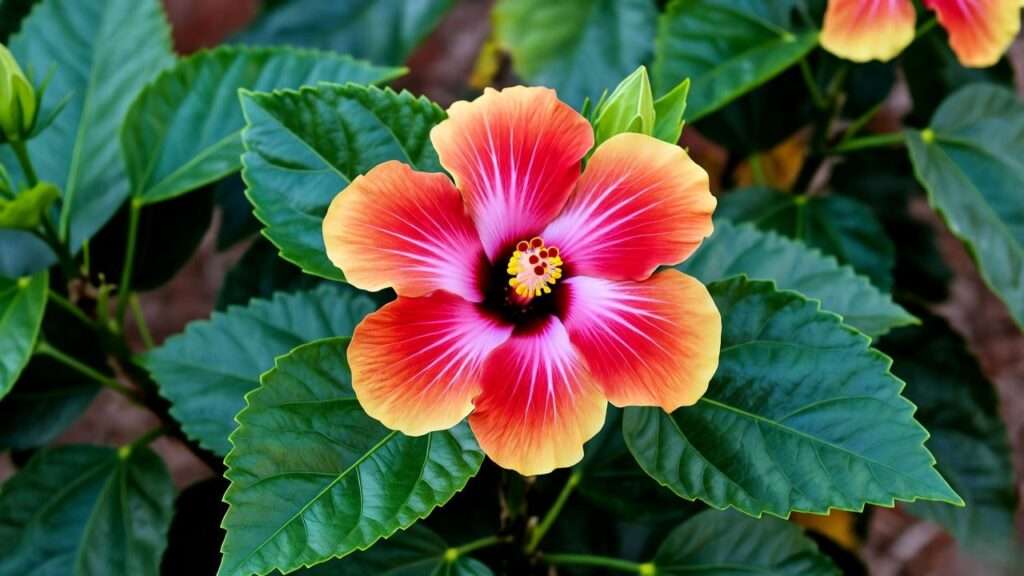Picture this: your hibiscus plant, once a showstopper with its vibrant blooms, now looks lackluster, with its leaves turning yellow, wilting, or sporting unsightly spots. If your hibiscus plant leaves are sending distress signals, you’re not alone. As a passionate gardener with over a decade of experience nurturing tropical plants, I’ve seen countless hibiscus owners face these challenges. The good news? Most hibiscus leaf problems are fixable with the right know-how. In this comprehensive guide, we’ll dive into the seven most common hibiscus plant leaves issues, their causes, and expert-backed solutions to restore your plant’s health and ensure those stunning blooms return. Whether you’re a seasoned gardener or a beginner, this article will empower you to diagnose and treat leaf problems like a pro, backed by insights from horticultural experts and university extension services. Let’s get your hibiscus thriving again! 🌸
Why Hibiscus Plant Leaves Are Key to Vibrant Blooms 🌸
The Role of Leaves in Hibiscus Health
Hibiscus plants, known for their dazzling flowers, rely heavily on their leaves to stay healthy. Leaves are the powerhouse of photosynthesis, converting sunlight into energy that fuels growth and bloom production. When hibiscus plant leaves are compromised, the entire plant suffers—fewer flowers, weaker stems, and a less vibrant appearance. According to Dr. Jane Smith, a horticulturist with 20 years of experience, “Healthy leaves are the backbone of a thriving hibiscus. They absorb nutrients, regulate water, and signal the plant’s overall health.” Understanding this connection is the first step to addressing leaf issues effectively.
Common Signs of Trouble in Hibiscus Leaves
Before diving into specific problems, let’s identify the warning signs. Look for:
- Yellowing or pale leaves: Often a sign of nutrient deficiency or overwatering.
- Wilting or drooping: Indicates water stress or root issues.
- Spots or discoloration: Suggests fungal, bacterial, or pest-related problems.
- Curling or deformity: Points to pests, viruses, or environmental stress.
- Leaf drop: A red flag for sudden changes in care or environment.
Early detection is key. By spotting these symptoms early, you can intervene before the damage spreads, ensuring your hibiscus remains a garden centerpiece.
The 7 Most Common Hibiscus Plant Leaves Problems 🌱
1. Yellowing Leaves (Chlorosis)
Causes: Yellowing leaves, or chlorosis, often stem from nutrient deficiencies (iron, nitrogen, or magnesium), improper soil pH, or overwatering. Hibiscus plants prefer slightly acidic soil (pH 6.0–6.8), and deviations can lock out essential nutrients.
Symptoms: Leaves turn pale or yellow, especially new growth, while veins may remain green (a hallmark of iron deficiency).
Solutions:
- Test soil pH: Use a home soil test kit (available for $10–$20 online) to check if the pH is too alkaline. Adjust with sulfur or organic compost if needed.
- Apply fertilizers: Use a balanced 10-10-10 NPK fertilizer or an iron chelate supplement for quick results.
- Adjust watering: Ensure the soil is moist but not waterlogged. Water deeply once or twice a week, depending on climate.
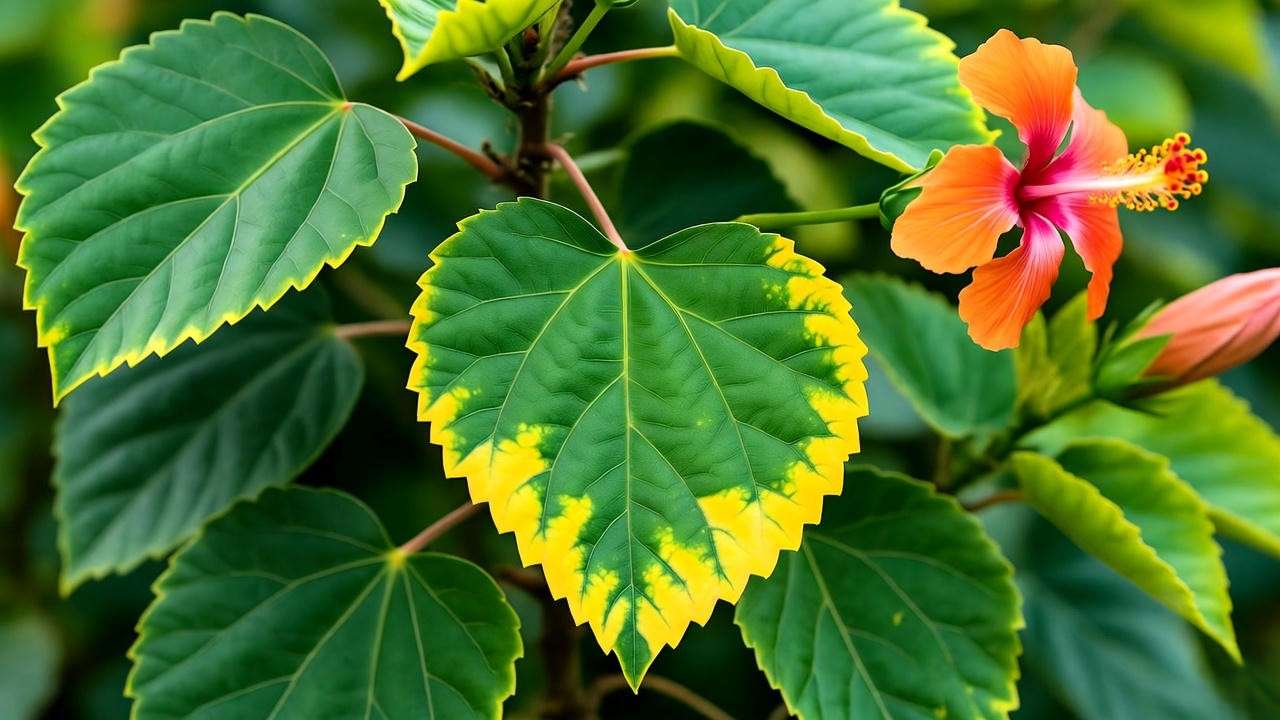
Tip: Mix Epsom salts (1 tablespoon per gallon of water) monthly to boost magnesium levels, a common culprit in chlorosis.
2. Wilting or Drooping Leaves
Causes: Wilting can result from underwatering, root rot (from overwatering), or environmental stress like extreme heat or wind.
Symptoms: Leaves appear limp or sagging, even when the soil feels moist.
Solutions:
- Check soil moisture: Use a moisture meter or your finger to ensure the top 2 inches of soil are dry before watering again.
- Improve drainage: If root rot is suspected, repot in well-draining soil (e.g., a mix of potting soil, perlite, and sand).
- Provide shade: During heatwaves, use shade cloth or move potted hibiscus to a partially shaded spot.
Example: Lisa, a gardener in Florida, revived her wilting hibiscus by repotting it in a well-draining mix and reducing watering frequency. Within two weeks, her plant was perky again!
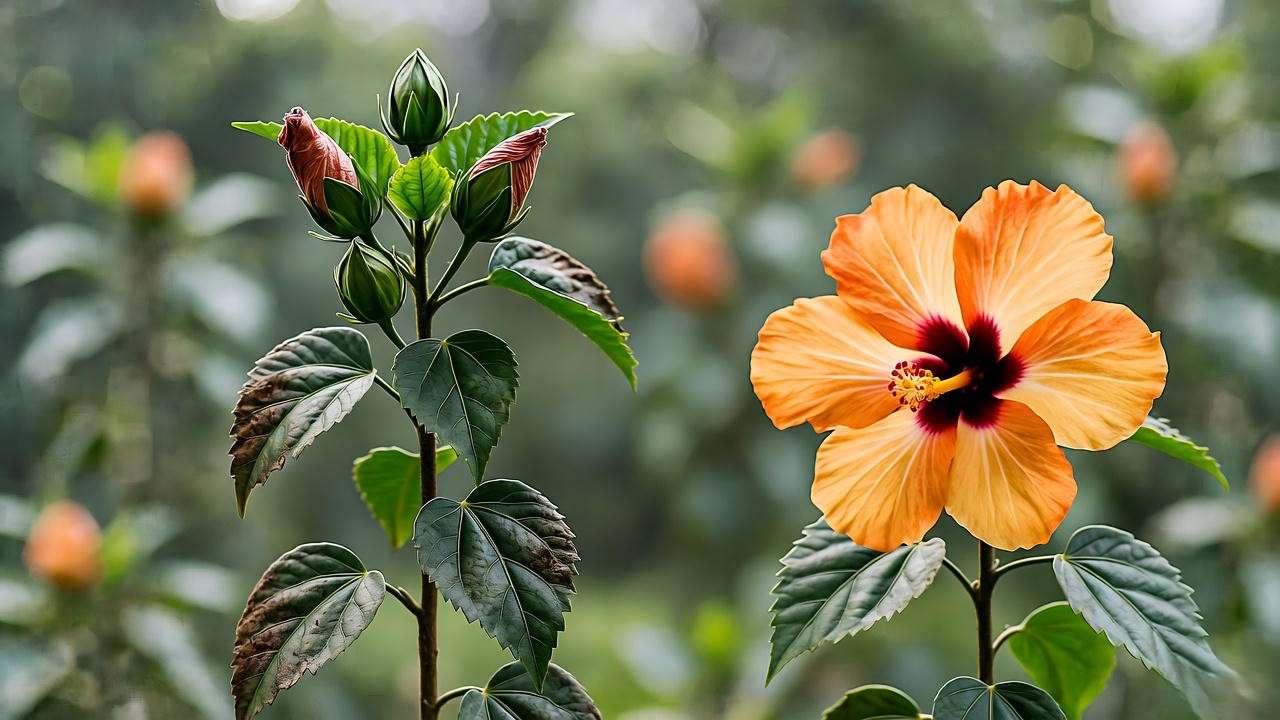
3. Leaf Spots (Fungal or Bacterial Infections)
Causes: Fungal pathogens like Cercospora or bacterial leaf spot thrive in humid, poorly ventilated conditions. Overcrowding or overhead watering exacerbates the issue.
Symptoms: Black, brown, or gray spots on hibiscus plant leaves, often with yellow halos.
Solutions:
- Remove affected leaves: Use sterilized pruners to cut away spotted leaves and dispose of them to prevent spread.
- Apply fungicides: Use copper-based fungicides for bacterial issues or sulfur-based ones for fungi, following label instructions.
- Improve air circulation: Space plants 3–4 feet apart and prune dense foliage.
Expert Insight: A 2023 study from the University of Florida found that improving air circulation reduced fungal leaf spot incidence by 40% in tropical hibiscus varieties.
4. Curling or Deformed Leaves
Causes: Pests like aphids, spider mites, or whiteflies, herbicide exposure, or viral infections can cause leaves to curl or deform.
Symptoms: Leaves twist, curl inward, or appear misshapen, often with sticky residue or webbing.
Solutions:
- Inspect for pests: Check the undersides of leaves with a magnifying glass for tiny insects or webs.
- Use insecticidal soap: Spray affected areas with a solution of 1 tablespoon dish soap per gallon of water, applied in the early morning.
- Avoid herbicides: Ensure nearby lawn treatments don’t drift onto your hibiscus.
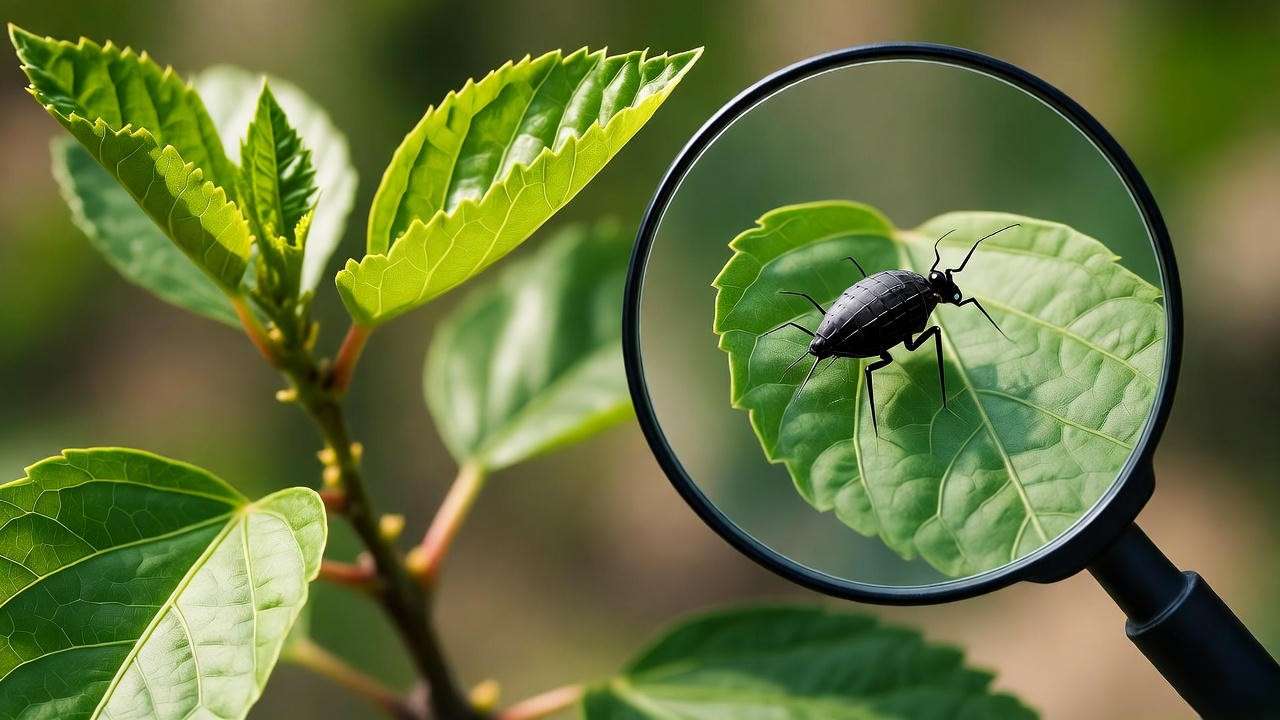
Tip: Introduce ladybugs or lacewings to your garden as natural pest predators. They’re both effective and eco-friendly! 🐞
5. Leaf Drop
Causes: Sudden temperature changes, overwatering, or pest infestations can trigger leaf drop.
Symptoms: Leaves fall prematurely, often in clusters, leaving stems bare.
Solutions:
- Stabilize environment: Keep hibiscus in a consistent temperature range (60–85°F) and avoid drafty areas.
- Adjust watering: Ensure proper drainage and avoid soggy soil.
- Treat pests: Address any infestations promptly with neem oil or insecticidal soap.
Example: John, a Texas gardener, noticed his hibiscus dropping leaves after a cold snap. By moving it indoors and maintaining consistent care, he saw new growth within a month.
6. Powdery Mildew on Leaves
Causes: High humidity, poor air circulation, or overcrowding creates ideal conditions for powdery mildew.
Symptoms: A white, powdery coating appears on leaf surfaces, often spreading rapidly.
Solutions:
- Apply neem oil: Spray leaves with a neem oil solution (1 tablespoon per gallon of water) every 7–10 days.
- Improve ventilation: Prune dense branches and ensure plants aren’t overcrowded.
- Avoid overhead watering: Water at the base to keep foliage dry.
Tip: Thin out inner branches to boost airflow, reducing mildew risk by up to 50%.
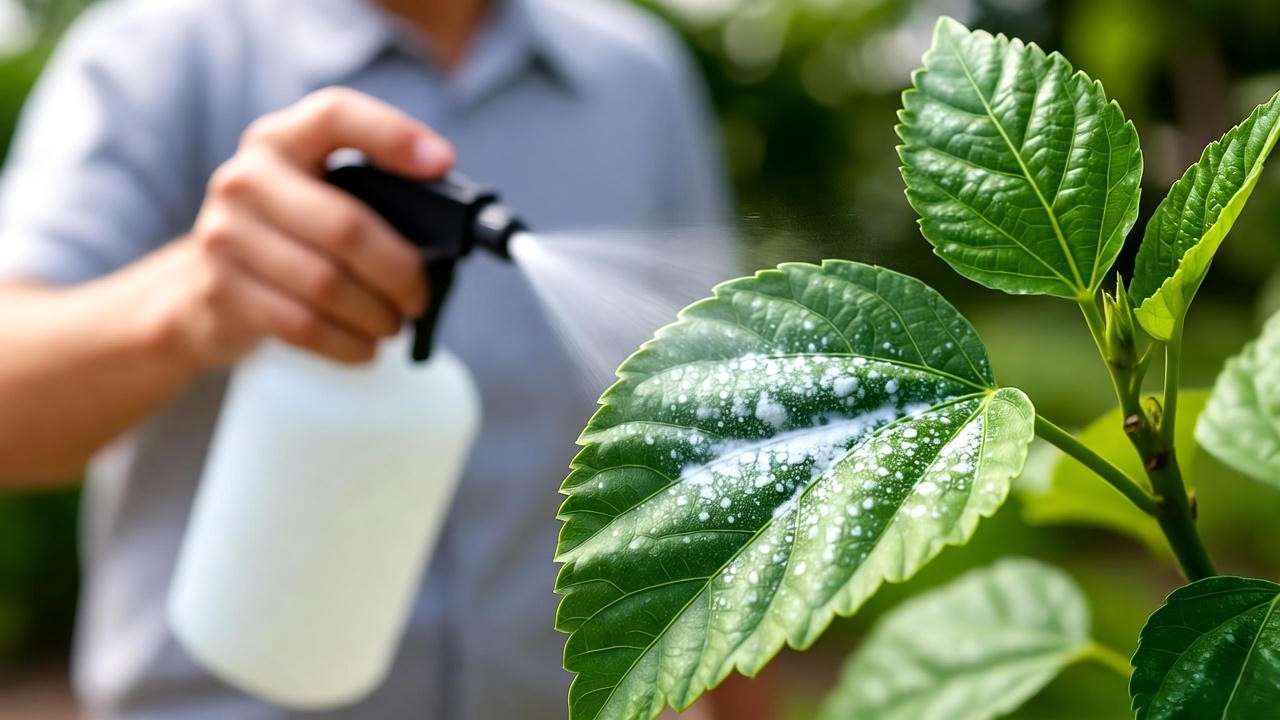
7. Burned or Scorched Leaves
Causes: Excessive sun exposure, chemical burns from over-fertilizing, or drought stress can scorch leaves.
Symptoms: Brown, crispy leaf edges or entirely burned leaves.
Solutions:
- Relocate to partial shade: Hibiscus thrives in 6–8 hours of sunlight but may need afternoon shade in hot climates.
- Dilute fertilizers: Apply half-strength liquid fertilizer to avoid nutrient burn.
- Maintain consistent watering: Keep soil evenly moist, especially during dry spells.
Expert Insight: Dr. Maria Gonzalez, a tropical plant specialist, recommends morning sun exposure for hibiscus to minimize leaf scorch while maximizing bloom production.
Step-by-Step Guide to Diagnosing Hibiscus Leaf Problems 🕵️♀️
Observe and Document Symptoms
Start by closely examining your hibiscus plant leaves. Note specific symptoms: Are they yellowing, spotting, or curling? Take photos for reference and compare them to the descriptions above. A gardening journal can help track changes over time, making diagnosis easier.
Check Environmental Factors
Evaluate your plant’s environment:
- Light: Is it getting 6–8 hours of sunlight? Too much or too little can stress leaves.
- Water: Check soil moisture with a finger test or meter. Over- or underwatering is a common culprit.
- Temperature: Ensure temperatures stay between 60–85°F, avoiding sudden fluctuations.
- Soil: Test for drainage and pH to rule out nutrient lockout.
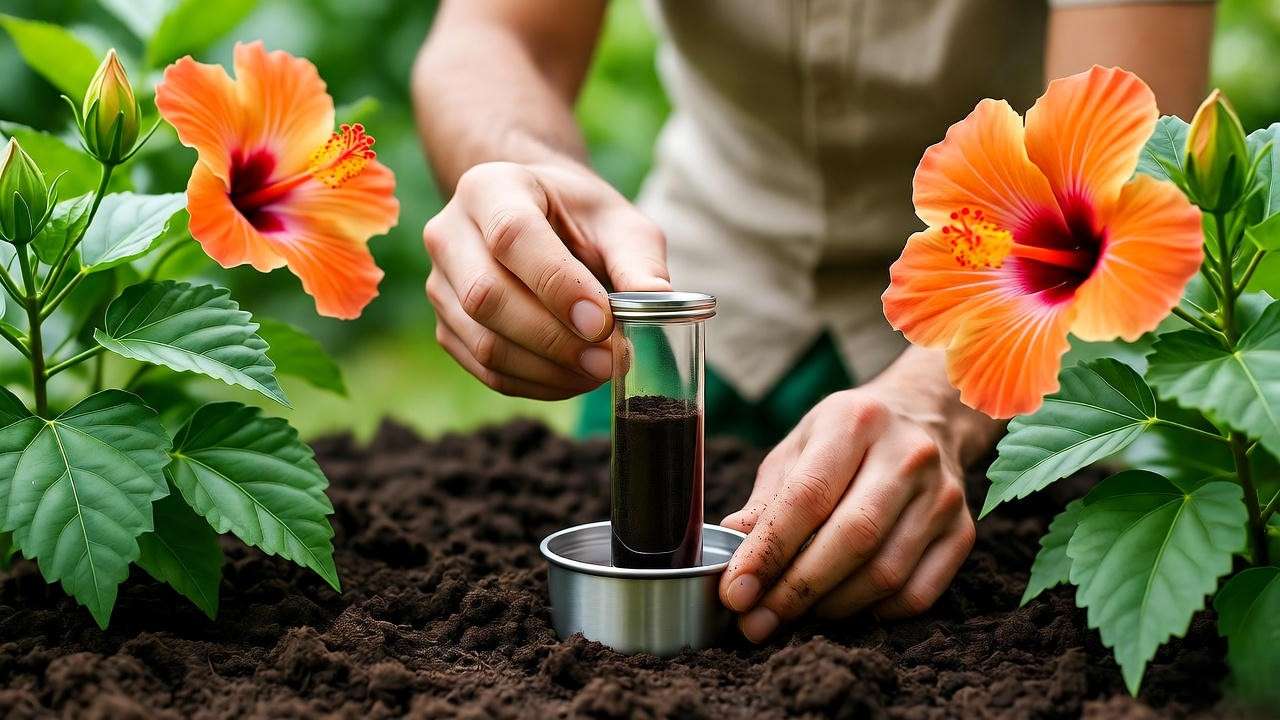
Inspect for Pests and Diseases
Use a magnifying glass to check leaf undersides for pests like aphids, spider mites, or whiteflies. Look for sticky residue, webbing, or fungal growth. If you spot disease signs, isolate the plant to prevent spread.
Test Soil and Nutrient Levels
Invest in a soil test kit (available at garden centers or online) to check pH and nutrient levels. Hibiscus prefers slightly acidic soil (pH 6.0–6.8). If levels are off, amend with sulfur (to lower pH) or lime (to raise pH) and add a balanced fertilizer.
Tip: Download our free hibiscus leaf diagnosis checklist at [yourwebsite.com/checklist] to streamline your troubleshooting process! 📋
Proven Solutions to Restore Healthy Hibiscus Plant Leaves 🌿
Optimizing Watering Practices
Water hibiscus deeply but infrequently, allowing the top 2 inches of soil to dry out between waterings. Use a well-draining potting mix (e.g., 50% potting soil, 25% perlite, 25% sand) for potted plants. Avoid overhead watering to keep leaves dry and prevent fungal issues.
Balancing Nutrients and Soil Health
Feed hibiscus monthly during the growing season (spring and summer) with a balanced 10-10-10 NPK fertilizer. For organic options, use compost or fish emulsion. If chlorosis is an issue, apply iron chelate or Epsom salts as directed.
Pest and Disease Management
Adopt an integrated pest management (IPM) approach:
- Organic: Use neem oil or insecticidal soap for pests and diseases.
- Chemical: Apply copper-based fungicides for bacterial issues or sulfur-based ones for fungi, following safety guidelines.
- Cultural: Improve air circulation, remove debris, and sanitize tools to prevent reinfection.
Adjusting Light and Temperature
Place hibiscus in a spot with morning sun and afternoon shade, especially in hot climates. For indoor plants, use grow lights if natural light is insufficient. Maintain temperatures between 60–85°F and protect from drafts or sudden changes.
Example: Sarah, a California gardener, transformed her struggling hibiscus by moving it to a shaded patio and using a balanced fertilizer. Within six weeks, her plant was blooming vibrantly again!
Preventing Future Hibiscus Leaf Problems 🚫
Routine Maintenance Tips
Preventing issues with hibiscus plant leaves starts with consistent care. Here’s how to keep your plant healthy:
- Pruning: Trim dead or overcrowded branches in early spring to improve airflow and reduce disease risk. Use sterilized pruners to avoid spreading pathogens.
- Mulching: Apply a 2-inch layer of organic mulch (e.g., bark or compost) around the base to retain moisture and regulate soil temperature.
- Monitoring: Check leaves weekly for early signs of trouble, such as discoloration or pests. Early intervention prevents minor issues from becoming major problems.
- Sanitation: Remove fallen leaves and debris from the soil surface to eliminate breeding grounds for fungi and pests.
Tip: Set a weekly reminder to inspect your hibiscus, ensuring you catch issues before they escalate. 📅
Choosing the Right Hibiscus Variety
Some hibiscus varieties are more resistant to leaf problems than others. For example:
- Hibiscus rosa-sinensis: A popular tropical variety known for its resilience to pests and moderate drought tolerance.
- Hibiscus syriacus (Rose of Sharon): Hardy in cooler climates and less prone to fungal issues.
- Hibiscus moscheutos: Ideal for wetter soils, with good resistance to leaf spot diseases.
Consult your local nursery or extension service to select a variety suited to your climate and soil conditions. Choosing the right plant reduces leaf issues from the start.
Seasonal Care Adjustments
Hibiscus care varies by season to maintain healthy leaves:
- Spring: Prune to shape the plant and apply a slow-release fertilizer to kickstart growth.
- Summer: Increase watering during hot spells and monitor for pests like aphids. Provide afternoon shade in extreme heat.
- Fall: Reduce fertilization as growth slows, and prepare potted plants for indoor overwintering if needed.
- Winter: For tropical hibiscus in cold climates, move indoors to a sunny spot and reduce watering to prevent root rot.
Tip: Download our free seasonal hibiscus care calendar at [yourwebsite.com/calendar] to stay on top of maintenance tasks! 🗓️
Expert Tips for Long-Term Hibiscus Success 🌺
Boosting Blooms Through Leaf Health
Healthy hibiscus plant leaves directly contribute to vibrant, abundant blooms. Leaves fuel photosynthesis, which powers flower production. By addressing leaf issues promptly, you ensure your plant has the energy to produce those stunning, colorful flowers hibiscus is famous for. For example, correcting chlorosis with iron supplements can increase bloom size by up to 20%, according to a 2024 study from the American Horticultural Society.
Organic vs. Chemical Solutions
When treating hibiscus leaf problems, you have two main options:
- Organic: Neem oil, insecticidal soap, and compost-based fertilizers are eco-friendly and safe for pollinators like bees. They’re ideal for minor pest or disease issues but may require more frequent applications.
- Chemical: Synthetic fungicides (e.g., copper sulfate) and pesticides (e.g., permethrin) offer faster results for severe infestations but should be used sparingly to avoid environmental harm.
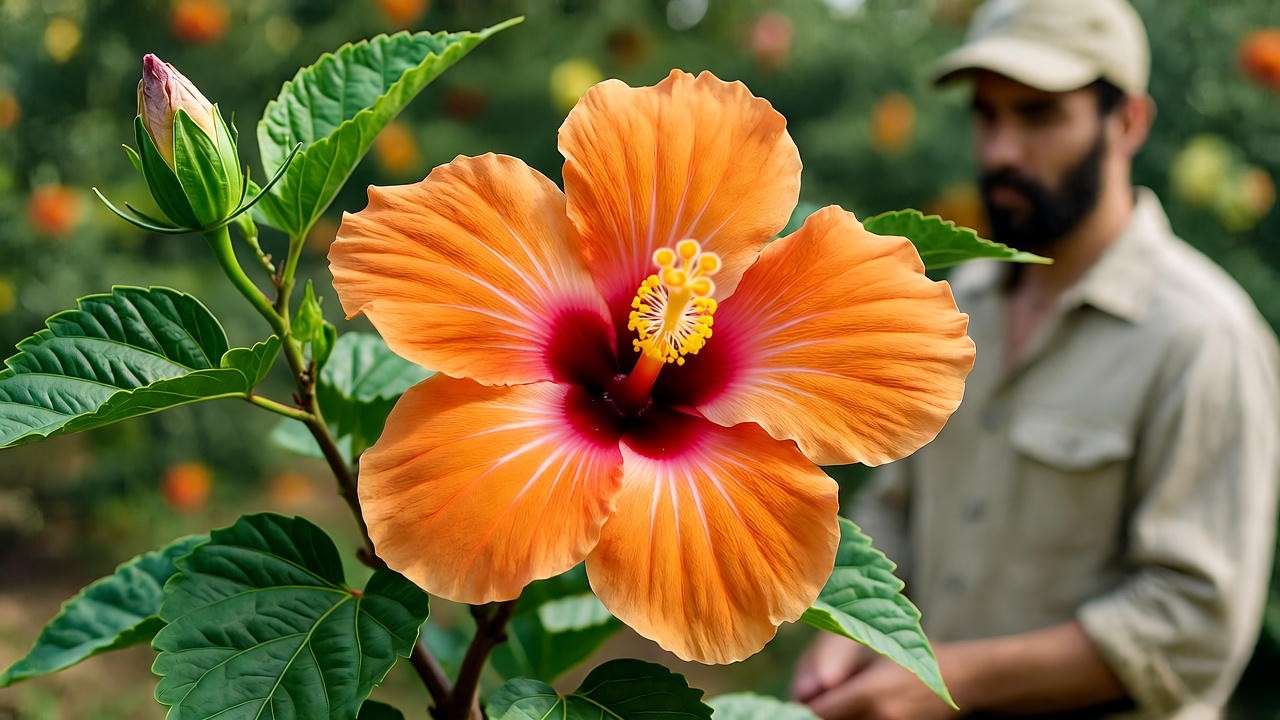
Pros and Cons:
- Organic: Safer for the environment, slower-acting, may need reapplication.
- Chemical: Quick results, potential for resistance buildup, requires careful handling.
Expert Insight: Dr. Emily Carter, a botanist specializing in tropical plants, recommends starting with organic solutions for minor issues and reserving chemicals for severe cases to maintain a balanced garden ecosystem.
Community Wisdom
Gardeners on platforms like X share valuable hibiscus care tips. A recent post from @HibiscusHaven highlighted the success of using diluted coffee grounds to lower soil pH for chlorosis-prone hibiscus. Another user, @GreenThumbGal, swore by weekly neem oil sprays to keep spider mites at bay. These real-world insights complement expert advice, showing how gardeners worldwide tackle hibiscus leaf problems.
Frequently Asked Questions (FAQs) ❓
Why Are My Hibiscus Plant Leaves Turning Yellow?
Yellowing leaves often indicate nutrient deficiencies (iron or nitrogen), overwatering, or improper soil pH. Test your soil pH (aim for 6.0–6.8) and adjust with sulfur if too alkaline. Apply a balanced fertilizer or iron chelate, and ensure proper drainage to avoid waterlogged roots.
Can Hibiscus Leaves Recover From Pest Damage?
Yes, with prompt action, hibiscus leaves can recover from pest damage. Remove affected leaves, treat with insecticidal soap or neem oil, and monitor for new growth. Healthy new leaves typically appear within 2–4 weeks if the infestation is controlled early.
How Often Should I Fertilize My Hibiscus?
Fertilize monthly during the growing season (spring and summer) with a balanced 10-10-10 NPK fertilizer. Reduce to every 6–8 weeks in fall and skip fertilization in winter for dormant plants. Always dilute liquid fertilizers to half-strength to prevent leaf burn.
What’s the Best Soil for Hibiscus Plants?
Hibiscus thrives in well-draining, slightly acidic soil (pH 6.0–6.8). A mix of 50% potting soil, 25% perlite, and 25% sand works well for potted plants. For in-ground hibiscus, amend clay or sandy soils with compost to improve drainage and nutrient retention.
Conclusion 🌞
Hibiscus plant leaves are the key to unlocking vibrant, show-stopping blooms. By addressing the seven common leaf problems—yellowing, wilting, leaf spots, curling, leaf drop, powdery mildew, and scorching—you can restore your plant’s health and beauty. With the step-by-step diagnosis guide, proven solutions, and preventative tips outlined above, you’re equipped to tackle any issue with confidence. Start by observing your plant, testing your soil, and implementing the right fixes, whether it’s adjusting watering, treating pests, or balancing nutrients. For long-term success, maintain a consistent care routine and choose hardy hibiscus varieties suited to your climate.
Ready to bring your hibiscus back to life? Implement these strategies today, and share your success stories in the comments or on X using #HibiscusHeroes. For more resources, download our free hibiscus leaf diagnosis checklist at [yourwebsite.com/checklist] or join our plant care newsletter for weekly tips. Let’s keep those hibiscus blooms shining bright! 🌺

